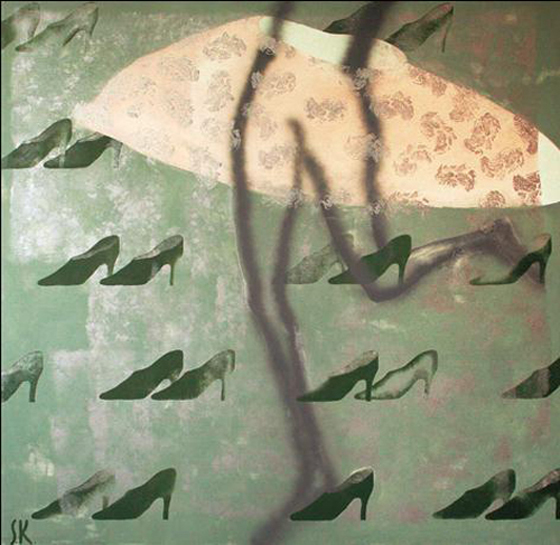|
|
 Should Anyone be Told? Should Anyone be Told? Ilze Vavilova, Art Historian Sandra Krastiņa. "Should Anyone be Told?" 04.03.-23.03.2009. Daugava Art Gallery | |
|
Should Anyone be Told? - the title sounds intriguing enough to forgo spending the first spring days of March in a sheltered spot, sunning one's winter-pale nose, choosing instead to go and see what mysteries lie hidden behind the title of Sandra Krastiņa's solo exhibition. Sandra Krastiņa belongs to the generation of artists that burst on to the Latvian art scene in the early 1980s. With the other young artists of her generation - Aija Zariņa, Ieva Iltnere, Jānis Mitrēvics, Edgars Vērpe and others - she radically changed society's existing perceptions about traditional Latvian painting. Having started her creative life in figurative painting, Sandra Krastiņa gradually turned to the abstract in the 1990s. Colour became the most important means of expression in her work. The refined, deep ultramarine, like the trademark motif of "the little man" and the playful textures, vividly expressed the artist's personal style, readily recognized by any exhibition and gallery visitor who may have seen it only once before. | |
 Sandra Krastiņa. A Crystal Shoe. Acrylic on canvas. 170x175cm. 2008. Photo: Sandra Krastiņa | |
|
The exhibition Should Anyone be Told? was surprising - if not shocking. A completely different Sandra Krastiņa was revealed to the audience. Instead of sinking into meditative self-complacency, so characteristic of creative personalities who have reached their peak, and manipulate with tried and trusted values and techniques, the artist has chosen to take a risk and embark on a path of exploration. It is undeniably a courageous decision - even more so in the awareness that the journey which has been begun has to be irreversible, otherwise it could just serve as a confirmation of a lack of professional and spiritual ability. The works exhibited at the gallery put a bold final full stop to the painter's "Blue Period" - only one among them (Pinēja / Weaver, 2006), like a lone reference in a text, relates to the past, thus symbolizing its end and the beginning of something new. | |
 Sandra Krastiņa. Festivity. Acrylic on canvas. 170x175cm. 2008. Photo: Sandra Krastiņa | |
|
In her new paintings from 2008 and 2009 the artist has consistently stayed away from her customary blue hues, preferring at times a spring-like, colourful palette, and at others - a monochrome one. Sandra Krastiņa's interest in representation is increasingly pronounced, although abstraction still dominates. The overarching thematic line of the exhibition did not create a single united composition, but on the associative level one had the feeling that the moment captured in the painting, this film frame stopped at a seemingly unimportant moment, hides something deeply personal and intimate. It could be that childhood memories and personal experience acquired over the course of the artist's life are breaking out into her works with a symbolic force - in the shape of paper snowflakes and doll chains. The thematic and stylistic diversity undeniably reflects the artist's many-sided personality, but it also creates an impression that the exhibition is retrospective in nature. However, on this occasion the lack of uniformity, in my opinion, is an end in itself, not a drawback. Sandra Krastiņa's exhibition is an experiment: only time will tell whether it is a transition period, or the beginning of a new journey. /Translator into English: Līva Ozola/ | |
| go back | |







